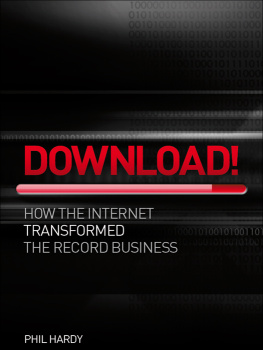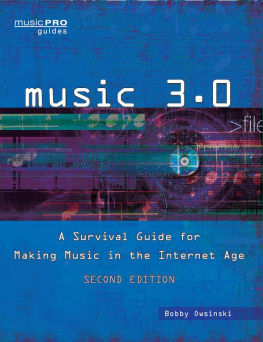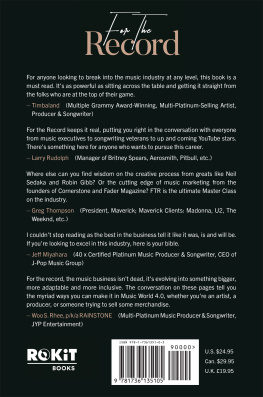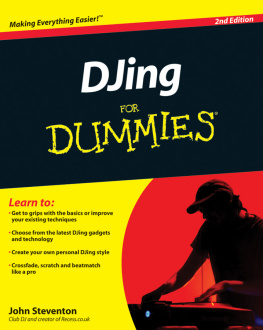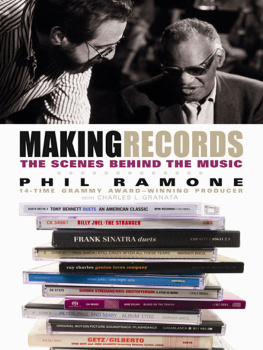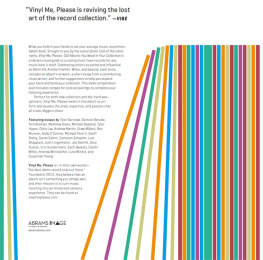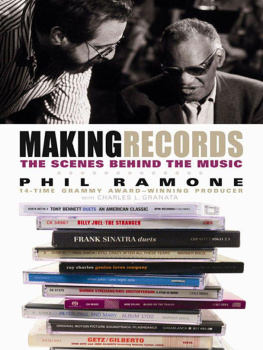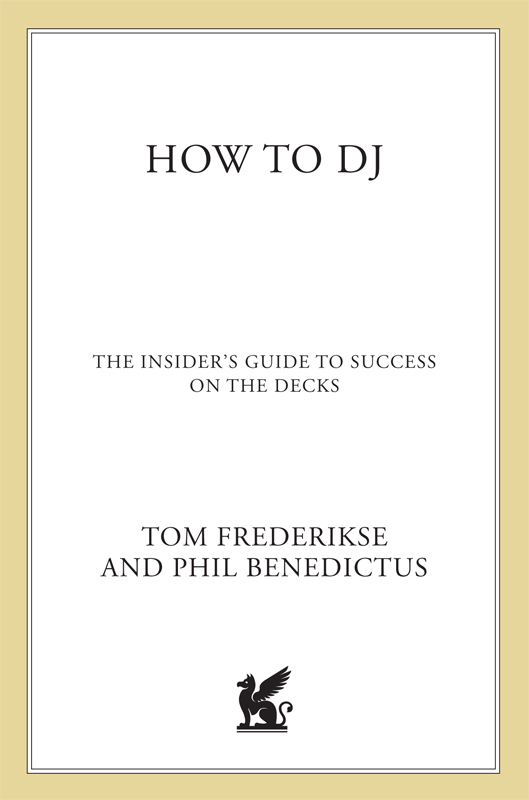
The author and publisher have provided this e-book to you for your personal use only. You may not make this e-book publicly available in any way. Copyright infringement is against the law. If you believe the copy of this e-book you are reading infringes on the authors copyright, please notify the publisher at: us.macmillanusa.com/piracy.
Contents
HOW TO DJ ACKNOWLEDGEMENTS
Credit where credit is due:
A huge shout to Rob Cowan for being the best geezer in the business. Cheers to Alice Davis for all your hard work and for believing in us. Thanks to those that made the early years so much fun for me: Sasha, Tommy D, Matthew Roberts, Frankie Foncett and Allister Whitehead. But most of all, thank you Mishy, for everything. Love and Respeck Tom.
Big up yerself: Rob Cowan you made it all happen, Tanya Benedictus for making me happen, the brothers, Luke and Dan The Incredible Benedictus props, boo, respect. And to all the great friends who have partied with me over the years; big love to one and all; keep it real, aright? Special thanks are also due to DMC in Sydney for provision of the finest mixing equipment in the Asia Pacific region at ridiculously short notice and to the boys at Cola Records for their brilliance and dedication Phil.
Suzy The Boss Crowley, Risto at Arbiter Group, Damon and Jojo at Numark Alesis, Graham and Fiona at Lewisham Council, Andy and Mark at the Karrot Project, Martin and Claire at GLLaB, Helen at Include, Everyone at DJ Magazine, Moose at the Ministry of Sound, Keeney-Mancini, Andy at Avision, Chris Elwell-Sutton, Niall Hampton, Allan at Red Sound, Mike Benson, Peter at Jack Ross, Graham Hound Massey, All Point-Blank students past and present, Janet and Karlene at the Crib, Wilma at Shoreditch New Deal Trust, Stuart Cameron at Newham, Sam Mann at the Mirror, Jeanette Cunningham at Greenwich, Amelia Pinsent at Hot Tickets, David Gordois at News of the World, Sandie Tozer at Time Out, Rob at the Medicine Bar, James at the Pool Bar Rob and Point-Blank.
PART ONE
GEAR & TECHNIQUE
THE SET UP
WHAT YOU NEED AND HOW TO PLUG IT IN
As long as you know what kit you need and how to work it, you dont really need to understand it. You just have to be able to get the equipment to play your tunes, which, fortunately, is what it is designed to do. Frankly, the most complicated tool a DJ uses is his or her own body.
And were talking about familiar components here, like turntables, which still play records. Its just that the ones DJs use have a few extra features. OK, so a disco mixer is not standard issue with most HiFi systems, but it is basically just a glorified stereo, which happens to be dedicated to mixing different sounds. The sound systems in clubs are bigger, more powerful versions of what you have at home, and while there may be a bit more complicated equipment you, as a DJ, are probably not even allowed to breathe on it; its somebody elses problem.
So this is the first thing to remember: the machines are on your side. They will do what you tell them.
THE SOUND SYSTEM
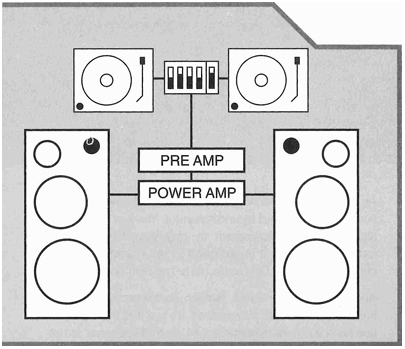
Figure 1: A classic club sound system demonstrating how the components work together
Players
First up, are the bits that actually play the records: turntables, CD players, MP3 players, Minidisc players, DAT players, and whatever else a clubowner might think of. These are the units that actually produce the music (the signal) that will eventually be amplified over the system.
Mixers
The disco mixer serves two purposes: to boost the signal as a pre-amplifier and to allow the DJ to blend different music sources. This louder signal is then passed on through to the amplifiers.
Amplifiers
These boost the sound. Amps can be any size, from as small as a briefcase to as large as a desk. Some processing (adjusting the quality of the sound) will take place at this stage whether you can see it or not. Occasionally, amplifiers have crossovers inside them. A crossover separates the sound into high treble and low bass. Often you will see another small box sitting on top of the amp, usually the crossover. You might also see an overall EQ (or equalizer) box sitting on the amp. This also processes the sound to make up for any acoustic problems in the room, and to help the amp seem even better than it is. The amplifier then sends the sound on its way to the speakers.
Speakers
These let the sound loose onto the dancefloor. The sound may also be sent from the mixer to a second amplifier and from there to a booth monitor speaker (see Chapter 4).
TOOLS OF THE TRADE
This is a brief guide to the kind of gear you can expect to encounter as a working DJ: how to set it up and how to use it. This book can tell you almost everything you need to know, but every piece of kit has its own peculiarities so you still need to read the instruction manuals provided.
Turntables
A DJ turntable is similar to a standard home HiFi turntable, but is adapted for club use. There are some specific changes that have been made to make things easier for DJs, but essentially it still plays records, by reading the groove with a tiny diamond (the needle) and turning the vibration into an electrical signal.
So whats the difference between a standard turntable and a DJ turntable? For a start, you need to have a very different needle (or cartridge) because the stability (or tracking) needs to be much better the needle must stick to the groove at all times. Domestic HiFi systems are all about the best possible sound and the kind of cartridge that delivers the best sound is very delicate, performing best with low weighting on the arm. It wouldnt last two seconds in a club. So for DJ turntables, you need a needle that is tough enough to survive scratch DJs, wont jump when faced with a floor full of pogoing nutters, but still delivers sound faithfully.
This is the first major difference: the DJ cartridge and tone-arm are designed as much with practicality as high fidelity in mind and to this end there has been a recent trend amongst manufacturers to go with a straight tone-arm, to further aid tracking.
Then theres the whole issue of the speed of the records (tempo). A HiFi turntable is designed to play at precisely 33 or 45 rpm, but a DJ turntable has a varispeed (pitch) controller allowing the DJ to slow down or speed up the tune very precisely. The classic DJ turntables, the Technics SL 1200 and 1210, allow you to speed up or slow down the record by up to eight per cent, while newer models might go up to 30% either way. Whatever the percentage, its there to help the DJ beat mix, passing seamlessly from one record to the next. If you are buying a DJ turntable, make sure that the varispeed controller is quick and precise.
The motor on a DJ turntable should also be strong. It must be able to withstand heavy use at the hands of DJs. It should be unruffled by heavy vibrations. And the motor has to start up and play the record at the right speed at the touch of a button.
Pick up any DJ turntable and youll see that its a pretty hefty piece of gear. If you think about clubs, the people who go there and what they get up to, this feature shouldnt be a surprise. One aspect that does vary from one DJ deck to the next is the weight of the disc that the records rest on (the platter) which does affect the DJ. You need a lighter touch with a lighter platter, logically enough.


